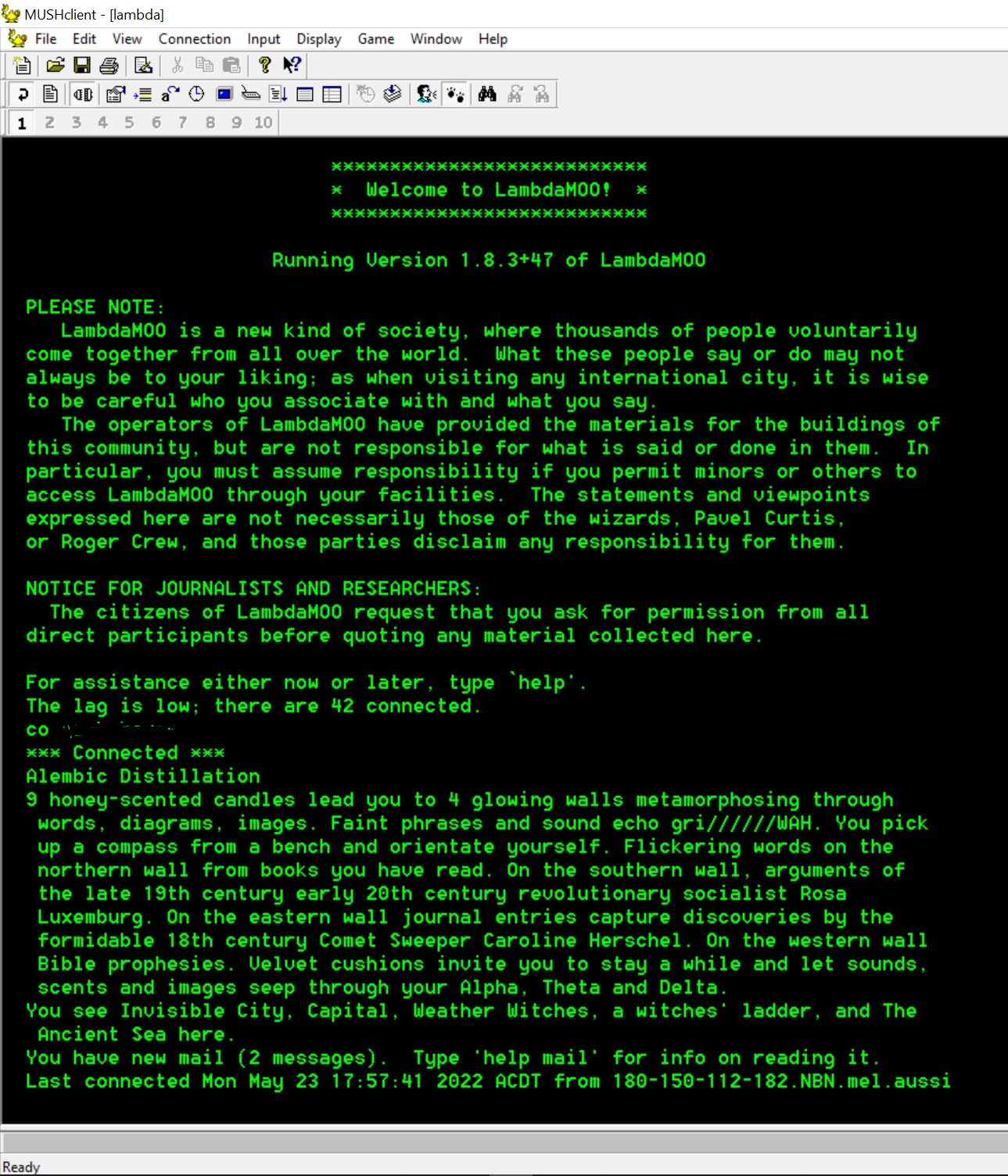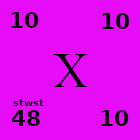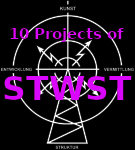
LambdaMOO
"In the early days of the internet, nobody knew how to make all that much money from it. We were free to play. We had radical ideas of using it to circumvent the dominant media and create autonomous cultures of our own. It became a kind of identity. We could be poets, theorists, and militants all at once. We could create communication and community for identities that were marginalized and oppressed. For instance—transsexuals. I found my people." Mackenzie Wark
LambdaMOO is a text-only online platform where people can connect, create characters, communicate and build things (rooms, labyrinths, avatars, oceans, etc) using Object-Oriented code. It was initiated and coded by Pavel Curtis at Xerox Parc in 1990, as a social experiment. How might people want to inhabit and interact in an emergent techno-social space (aka VL or Virtual Life)? As it turns out much of what happened and happens there is pretty much the same as IRL (In Real Life). People loved, fought, created, destroyed, experimented, explored, made community, played, had net sex, made private rooms and public spaces, added cool stuff to code libraries, made art, and tried on new personas for size.
in the beginning . . .
the islands in the net were fewer, but people and platforms enough
for telepathy far-sight spooky entanglement
seduction of, and over, command line interfaces
it felt lawless
and moreish
wandering into the maw of the feast
Unsurprisingly, Lambda became the chosen digital home of a motley crew of artists, academics, queers and freaks, all engaged in a networked social experiment that was writing its own premises and promises as it evolved, in ways enlightening, enlivening and sometimes problematic. As early LambdaMOO inhabitant writer and academic Sue Thomas explains, "unlike the richly-featured graphic worlds like Second Life, LambdaMOO was confined to plain text, making it a digital heaven for anyone who enjoys spinning words to create new environments and personas." This place of language was one of the first VL or IRL spaces where people could adopt English gender-neutral pronouns (aka Spivak pronouns courtesy of the mathematician Michael Spivak who used e/em/eir in The Joy of TeX). Given this choice, spivak-gendered avatars profilerated in Lambda's seemingly infinite domain. Users came to test drive the early-internet promises of a future beyond gender, race, dis/ability and economics. While these promises were relatively quickly debunked, the experiments generated a wealth of philosophical discourse around identity and virtuality.
"I found transsexuality online. I was an early adopter of the internet. One of the reasons was that there were online spaces, as far back as the ’80s, where I could be a girl. LambdaMOO was an all-text, online space where one could write oneself as anything at all. There were six sets of pronouns to choose from, including “it,” the royal “we,” and gender-neutral ones. On LambdaMOO, I was she—and not in the gay male sense." Mackenzie Wark
VNS Matrix had their collective headquarters there at CorpusFantasticaMOO,and built other experimental code caves including The Limen and The State of X-ness. We met a vampyre in The Morgue, bowed down at Kathy Acker's altar of abjection in her rattish incarnation, hosted a rave, tattooed visitors, ran an in-MOO peep show, built a teleport machine called Subliminal Shift, and made mischief in Lambda's communal Hot Tub in our aberrant queered as fuck morphs that had escaped from teen TV series Beverly Hills 90210.
"In this communication oriented environment, art was a part of a group mind and the artist could shape art not only for that group mind but with that group mind." Judy Malloy
https://www.furtherfield.org

